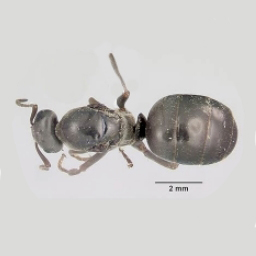The Field Ant
Field ants (Formica glacialis) are slightly larger than pavement ants, measuring 5 to 6 mm. Their colour varies between brown and black. They are sometimes confused with carpenter ants due to their size. Their presence can be observed by the mounds of about 5 to 6 cm in the lawn. These are significantly larger than those of the pavement ant.
The lifestyle of the field ant
Habitat
Field ants dig tunnels in the ground. They seek out sandy areas. Lawns are therefore a preferred location for building their nests. Nests are therefore rarely found inside homes. However, ants can enter homes when they are looking for food.
Diet
Field ants are insectivores. They feed on insects and sweet substances. It’s usually these sweet substances that lure them inside homes. When they find a feast, they release an odorous hormone to attract other ants from the colony.
Reproduction
The mating season of the field ant begins around July. During this period, it’s not uncommon to notice a cloud of flying ants. This is a swarming. The queen mates during the swarming. She then digs a hole to deposit her eggs, which is called the royal chamber. A new colony emerges as a result of this reproduction.

The risks associated with field ants
Field ants are harmless to humans. However, they can pinch slightly or cause a burning sensation on the skin. By contrast, the presence of a nest on the grass will impede its growth. As the mounds of sand can measure up to 30 cm in diameter, the appearance of your lawn could be affected. A colony of field ants can survive about 10 years. Don’t wait to contact professionals who will intervene effectively to eradicate the field ant mounds that are invading your land.

